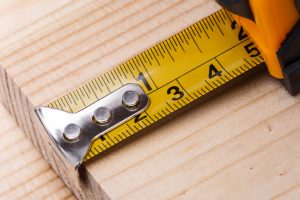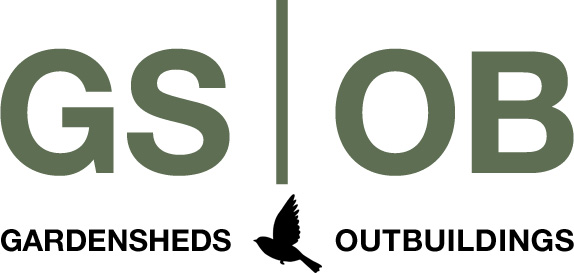[et_pb_section bb_built=”1″ specialty=”off” next_background_color=”#000000″ _builder_version=”3.9″ disabled=”off” disabled_on=”off|on|on” custom_margin=”0px||0px|” custom_padding=”0px||0px|”][et_pb_row _builder_version=”3.9″ use_custom_gutter=”on” gutter_width=”1″][et_pb_column type=”4_4″][et_pb_text admin_label=”Mobile Navigation” _builder_version=”3.9″]
[/et_pb_text][/et_pb_column][/et_pb_row][/et_pb_section][et_pb_section bb_built=”1″ _builder_version=”3.9″ custom_margin=”0px||0px|” custom_padding=”0px|0px|0px|0px” next_background_color=”#000000″ prev_background_color=”#000000″ global_module=”28″][et_pb_row global_parent=”28″ _builder_version=”3.9″ use_custom_gutter=”on” gutter_width=”1″ make_equal=”on” custom_margin=”0px||0px|” custom_padding=”0px||0px|”][et_pb_column type=”1_3″][et_pb_image admin_label=”Header Image” global_parent=”28″ _builder_version=”3.11″ src=”https://www.gardensheds.com/wp-content/uploads/2018/07/home-header-photo.jpg” show_bottom_space=”off” custom_margin=”0px||0px|” custom_padding=”0px|0px|0px|0px” disabled=”off” disabled_on=”on||” /][/et_pb_column][et_pb_column type=”2_3″][et_pb_image admin_label=”Logo Image” global_parent=”28″ _builder_version=”3.14″ src=”https://www.gardensheds.com/wp-content/uploads/2018/09/logo.png” show_bottom_space=”off” custom_margin=”0px||0px|” custom_padding=”0px|0px|0px|0px” url=”https://www.gardensheds.com/” /][/et_pb_column][/et_pb_row][/et_pb_section][et_pb_section bb_built=”1″ _builder_version=”3.9″ custom_margin=”0px||0px|” custom_padding=”0px|0px|0px|0px” next_background_color=”#000000″ prev_background_color=”#000000″][et_pb_row _builder_version=”3.9″ use_custom_gutter=”on” gutter_width=”1″ make_equal=”on” custom_margin=”0px||0px|” custom_padding=”0px||0px|”][et_pb_column type=”4_4″][et_pb_text admin_label=”Building Anatomy Text” _builder_version=”3.12.2″ custom_margin=”0px||0px|” custom_padding=”36px|30px|36px|30px” custom_padding_phone=”15px|15px|15px|15px” custom_padding_last_edited=”on|desktop” text_line_height=”1.4em” text_font_size_last_edited=”off|desktop” text_line_height_phone=”1.7em” text_line_height_last_edited=”off|phone” header_font_size=”58px” text_orientation=”justified”]
Building Anatomy

Tale of the tape. I’ve spent thirty-six rewarding years devoted to the craft of design and construction. In that time I’ve seen it all—the good, the bad, the dishonest, the honest, the ugly, the beautiful. Nothing surprises me anymore. As a company, GS-OB is fortunate in that we’re successful enough to speak with a measure of freedom and to share our experience with you whether you decide to purchase from us or not (of course we hope you will).
In a culture that increasingly confuses truth, honesty is often poised as hypocrisy. In the “shed” business, in particular, it’s tempting and easy to build quick and cheap with secondary materials and second-rate craftsmanship—an unfortunate reminder that you get what you pay for. Like most products the small building market is tiered. There’s low-end, average, and high-end. As a consumer it’s important to understand the distinction with each.
Most everyone has seen them…..a roadside display of sheds. If nothing else it serves as a “Pre-fab Shed” reference point for most people. Ubiquitous as these displays are it also presents a distorted, one-sided point-of-view. The two major downsides with this reference point are quality and price.
There’s a market for run-of-the-mill ordinary. It’s just not what we do. If you’re shopping for price and willing to dismiss quality there are countless less expensive options than what we offer. If, on the other hand, you’re discriminating about design (actually care about correct architectural proportion and scale), quality materials (and know how to distinguish different wood species and grades), and consummate craftsmanship —we are absolutely confident you won’t find a better value than what we offer. We have a 25-year history and sterling reputation to make that claim.
We’re old school, dyed-in-the-wool perfectionists. Build it right, or don’t build it at all. It’s a simple notion about craftsmanship and character that we adhere to. It means we don’t cut corners or make excuses. This philosophy has served us well since we began in 1993.
We reject materials others would say is acceptable with the proverbial cover excuse that “no one will know the difference.” Think about that. There’s a principle we adhere to called ‘integrity.’ Let’s start with the obvious—the frame of a building, or what we refer to as the ‘bones’ of a building. It’s the very first thing you notice when you step inside one of our outbuildings. It looks different and there’s a simple reason. It is different. The easy shortcut here is to run to the local big box store or lumberyard and pick-up some standard Doug fir/spruce 2 x 4’s. Nothing wrong here if that’s what you want. The problem in our book with this approach is that the standard stud materials were never intended to be exposed and seen. More often than not they’re twisted with knots, wane, and visible imperfections. We take a different approach to framing.
To better illustrate, our flagship model— Williamsburg Classic (10 x 10) requires approximately 1,000 lineal feet of material for walls and roof structure. It’s almost double the cost of standard run-of-the-mill studs and plywood. But at approximately $1000 additional cost we think it’s a sound investment. The difference is not subtle. It’s readily obvious. Framing is not cosmetic, it’s structural.
We celebrate the inherent beauty to be found in framing. Ours is intentionally designed and milled to be exposed. We call it ‘cottage framing’ and it’s unique to our company. Two things you need to know about our framing. One, we use poplar (a hardwood not a softwood like Doug fir). We buy our material “green” directly from a sustained supplier (not a wholesaler), again, to offer you the best value. We send our material to be kiln-dry to 11% moisture and then mill to a true measure 2” x 4” (not the nominal measure of 1-1/2” x 3-1/2” common stud). We also use poplar for our wall let-in bracing. You won’t see this bracing on other ‘sheds.’ It’s more time consuming to notch the wall studs. We use bracing because it provides an added measure of structural integrity to the building frame as a whole. To be aesthetically and structurally consistent we use the same poplar material on our roof structure—hip rafters. jack rafters and skip lath. This unified look is visibly obvious, Doubtful? Here’s a visual comparison between our poplar and more typical Doug fir. We’ll let you be the judge if the cost difference is worth it:
[/et_pb_text][/et_pb_column][/et_pb_row][et_pb_row _builder_version=”3.12.2″ use_custom_gutter=”on” gutter_width=”2″ make_equal=”on”][et_pb_column type=”1_2″][et_pb_image admin_label=”Building Anatomy 7394 Image” _builder_version=”3.12.2″ src=”https://www.gardensheds.com/wp-content/uploads/2018/08/Building-Anatomy7394.jpg” show_in_lightbox=”on” /][/et_pb_column][et_pb_column type=”1_2″][et_pb_image admin_label=”Building Anatomy 7395 Image” _builder_version=”3.12.2″ src=”https://www.gardensheds.com/wp-content/uploads/2018/08/Building-Anatomy7395.jpg” show_in_lightbox=”on” /][/et_pb_column][/et_pb_row][et_pb_row _builder_version=”3.12.2″ use_custom_gutter=”on” gutter_width=”2″ make_equal=”on” custom_padding=”0px|||”][et_pb_column type=”1_2″][et_pb_image admin_label=”Building Anatomy 7402 Image” _builder_version=”3.12.2″ src=”https://www.gardensheds.com/wp-content/uploads/2018/08/Building-Anatomy7402.jpg” show_in_lightbox=”on” /][/et_pb_column][et_pb_column type=”1_2″][et_pb_image admin_label=”Building Anatomy 7396 Image” _builder_version=”3.12.2″ src=”https://www.gardensheds.com/wp-content/uploads/2018/08/Building-Anatomy7396.jpg” show_in_lightbox=”on” /][/et_pb_column][/et_pb_row][et_pb_row _builder_version=”3.9″ use_custom_gutter=”on” gutter_width=”1″ make_equal=”on” custom_margin=”0px||0px|” custom_padding=”0px||0px|”][et_pb_column type=”4_4″][et_pb_text admin_label=”THEIRS Text” _builder_version=”3.12.2″ custom_padding=”||30px|”]
[/et_pb_text][/et_pb_column][/et_pb_row][et_pb_row _builder_version=”3.12.2″ use_custom_gutter=”on” gutter_width=”2″ make_equal=”on” custom_padding=”0px|||”][et_pb_column type=”1_2″][et_pb_image admin_label=”Building Internal Frame Image” _builder_version=”3.12.2″ src=”https://www.gardensheds.com/wp-content/uploads/2018/08/Building-Internal-Frame.jpg” show_in_lightbox=”on” /][/et_pb_column][et_pb_column type=”1_2″][et_pb_image admin_label=”Building Anatomy 7453 Image” _builder_version=”3.12.2″ src=”https://www.gardensheds.com/wp-content/uploads/2018/08/Building-Anatomy7453.jpg” show_in_lightbox=”on” /][/et_pb_column][/et_pb_row][et_pb_row _builder_version=”3.12.2″ use_custom_gutter=”on” gutter_width=”2″ make_equal=”on” custom_padding=”0px|||”][et_pb_column type=”1_2″][et_pb_image admin_label=”Building Anatomy 7368 Image” _builder_version=”3.14″ src=”https://www.gardensheds.com/wp-content/uploads/2018/08/Building-Anatomy7368.jpg” show_in_lightbox=”on” /][/et_pb_column][et_pb_column type=”1_2″][et_pb_image admin_label=”Frame Detail Image” _builder_version=”3.12.2″ src=”https://www.gardensheds.com/wp-content/uploads/2018/08/Frame-Detail.jpg” show_in_lightbox=”on” /][/et_pb_column][/et_pb_row][et_pb_row _builder_version=”3.9″ use_custom_gutter=”on” gutter_width=”1″ make_equal=”on” custom_margin=”0px||0px|” custom_padding=”0px||0px|”][et_pb_column type=”4_4″][et_pb_text admin_label=”OURS Text” _builder_version=”3.14″ custom_padding=”||30px|”]
[/et_pb_text][et_pb_text admin_label=”Bldg Anatomy Navigation Text” _builder_version=”3.14″ custom_padding=”||30px|” text_font=”|700|||||||” text_font_size=”18px” saved_tabs=”all” border_radii=”on|0px|0px|0px|0px” border_width_bottom=”5px” custom_margin=”||30px|”]
[/et_pb_text][/et_pb_column][/et_pb_row][et_pb_row _builder_version=”3.9″ use_custom_gutter=”on” gutter_width=”2″ custom_margin=”0px|||” custom_padding=”0px|||”][et_pb_column type=”1_4″][et_pb_text admin_label=”Facebook” _builder_version=”3.11″ text_font_size=”21px” custom_padding=”|||50px”]
[/et_pb_text][/et_pb_column][et_pb_column type=”1_4″][/et_pb_column][et_pb_column type=”1_4″][/et_pb_column][et_pb_column type=”1_4″][et_pb_text admin_label=”we deliver nationally” _builder_version=”3.11″ text_font_size=”21px” text_orientation=”center” custom_padding=”|50px||”]
 we deliver nationally
we deliver nationally
[/et_pb_text][/et_pb_column][/et_pb_row][/et_pb_section][et_pb_section bb_built=”1″ _builder_version=”3.9″ custom_margin=”0px||0px|” custom_padding=”0px|0px|0px|0px” prev_background_color=”#000000″ global_module=”61″][et_pb_row global_parent=”61″ _builder_version=”3.9″ use_custom_gutter=”on” gutter_width=”1″ make_equal=”on” custom_margin=”0px||0px|” custom_padding=”0px|0px|0px|0px” background_color_1=”#000000″ custom_padding_phone=”15px||0px|10px” custom_padding_last_edited=”off|phone” padding_top_1=”36px” padding_left_1=”20px” padding_1_last_edited=”on|tablet” background_color_2=”#000000″ padding_1_tablet=”15px|||10px”][et_pb_column type=”1_3″][et_pb_sidebar global_parent=”61″ _builder_version=”3.11″ area=”et_pb_widget_area_1″ show_border=”off” background_layout=”dark” module_class=”fnav” body_font_size=”21″ body_font_size_phone=”16″ body_font_size_last_edited=”on|desktop” body_font_size_tablet=”18″ /][et_pb_text global_parent=”61″ _builder_version=”3.11″ text_font_size=”14px” background_layout=”dark” module_class=”gsob-cw” custom_padding=”40px|||” custom_padding_last_edited=”on|desktop” custom_padding_tablet=”15px|||”]
©2018 Gardensheds, Inc.
[/et_pb_text][/et_pb_column][et_pb_column type=”2_3″][et_pb_image admin_label=”Footer Image” global_parent=”61″ _builder_version=”3.11″ src=”https://www.gardensheds.com/wp-content/uploads/2018/07/footer-image.jpg” show_bottom_space=”off” custom_margin=”0px||0px|” custom_padding=”0px|0px|0px|0px” /][/et_pb_column][/et_pb_row][/et_pb_section]


Recent Comments